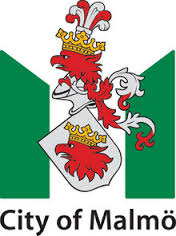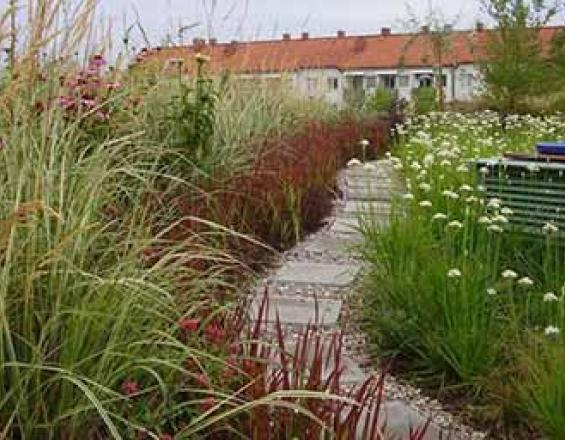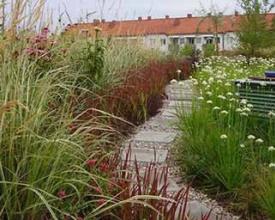
Storm water management and urban regeneration in Malmö

Augustenborg experienced socio-economic decline and floods from overflowing drainage. This collaborative solution aimed to retrofit the area with Sustainable Urban Drainage Systems as part of a broader regeneration project, thereby creating a more sustainable neighborhood and benefiting biodiversity. The main goal was to handle 70% of storm water from roofs and sealed areas, thus eliminating combined sewer overflow by lowering the total volume of storm water and reducing the peak flow rates.
Context
Challenges addressed
A lack of awareness and doubts about the value of SuDS created resistance by city planners and water engineers. Apathy and language barriers in the public prevented widespread participation and support. The challenge was thus to develop a functional system that did not damage existing infrastructures and was acceptable to residents. During implementation, technical issues such as algal blooms and finding space to implement SuDS presented challenges. Health and safety issues also had to be solved, as many SuDS were located next to schools and/or elderly populations.
Location
Process
Summary of the process
Building Blocks
Partnering for success: securing expertise and funding
Enabling factors
Lesson learned
Maximizing co-benefits through smart planning
Enabling factors
Lesson learned
Engaging stakeholders to raise awareness and support
Enabling factors
Lesson learned
Impacts
The project has created a resilient flood protection system and has revitalized the surrounding neighbourhood. In total, 6km of canals and water channels and ten retention ponds were created to collect rainwater in natural ditches and reservoirs before directing it into a conventional sewer system. The rainwater from roofs, roads and car parks is channelled through visible trenches, ditches, ponds and wetlands, leading to an estimated 90% of the storm water being led into the open storm-water system. In addition, the total annual runoff volume is reduced by about 20% compared to the conventional system. These landscape features are integrated into the townscape within 30 courtyard areas, which also provide recreational green spaces for the area’s residents. As a result of the initiative, there have not been any floods in the area since the open stormwater system was installed. The project also targeted biodiversity conservation and has made significant contributions in this regard.
Beneficiaries
The residents benefit from reduced flood risk and increased recreational values. Invertebrates, aquatic plants and birds profit from the newly created wetland habitats. Others attempting to implement SuDS can learn from Augustenborg’s experience.
